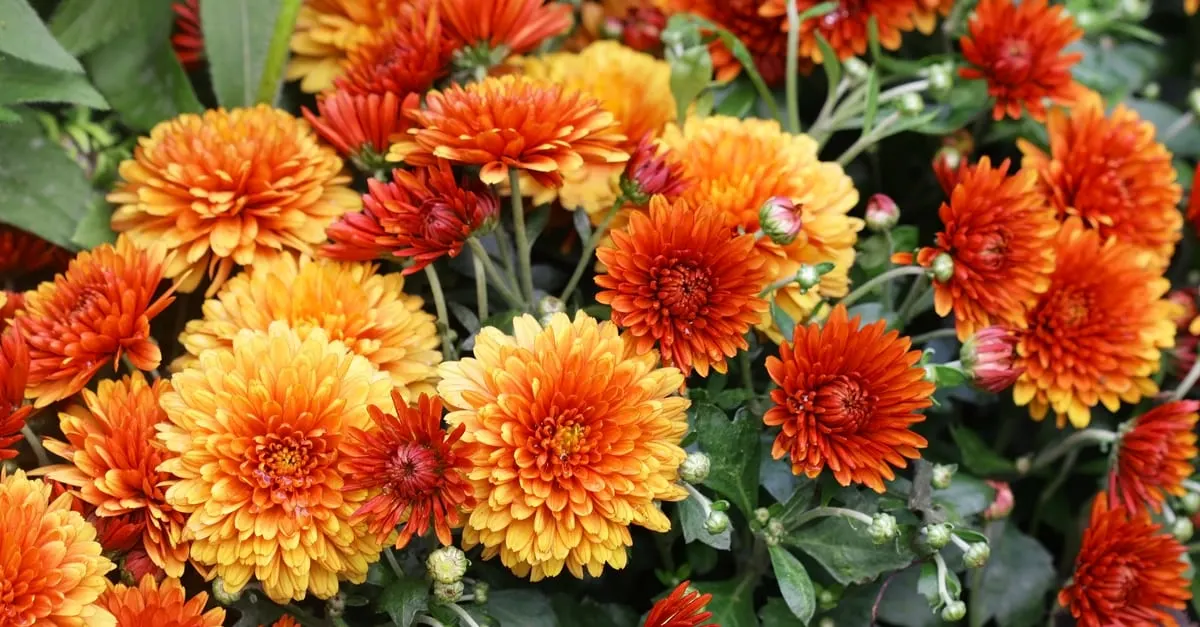The only thing difficult about chrysanthemums is the spelling. (And even that can be easily abbreviated to mums or chrysanths.)
Otherwise, mums are pretty easy to care for indoors and out with a little TLC.
So if you couldn’t resist picking up a potted mum at the grocery store or someone dropped one on your doorstep as a housewarming, you can make this fall flower thrive.
Here’s how to care for mums.
Caring for Potted Mums
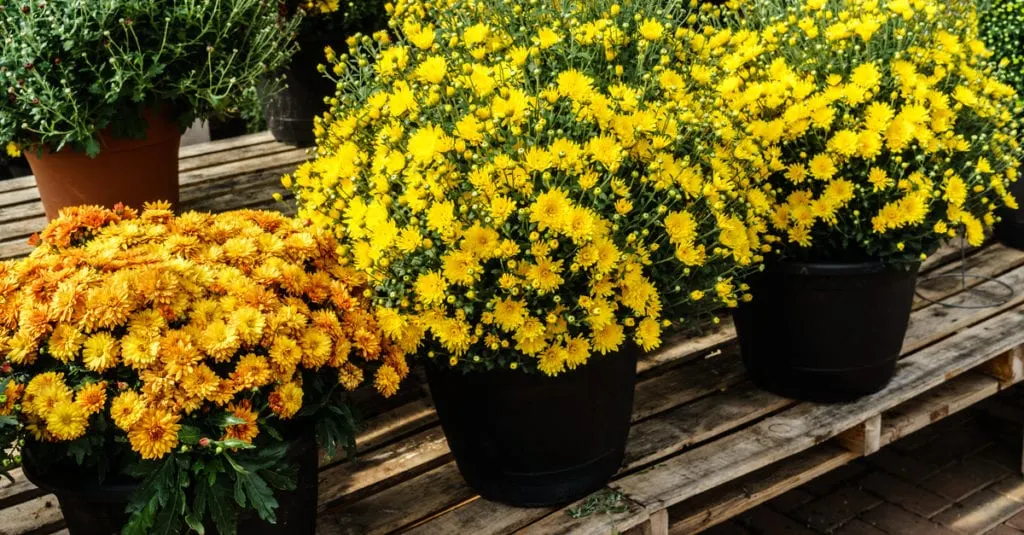
Verena Joy/Shutterstock
There are actually two kinds of mums: florist mums and garden mums, or hardy mums. The former is used for cut flowers in arrangements. The latter are planted outside and used as bedding plants.
Hardy mums are equipped to survive a hard frost, while florist mums will not. Both kinds are ideal container plants. There isn’t really much care involved.
Put these blooms into a clay pot or window box after breaking up the roots a bit. Put them in fertilized soil and place them in full sun.
Remember, all that light will make them thirsty. After repotting, give them a good drenching. Moving forward, water every other day.
When watering, take care not to water the plant’s lush foliage. Instead, pour water directly into the plant’s soil. Fertilizing isn’t necessary for container mums, but a water-soluble plant food never hurts!
How to Pick Potted Mums
Of course, the healthier your mums to begin with, the better their chance of thriving. Look for plants that have healthy foliage and no wilting leaves. It’s also wise to head to your local garden center and purchase locally grown mums.
These varieties will be best suited to your region’s climate. If you want your plant to last the longest, choose a plant with tight, unopened flower buds. Either way, make sure the soil is moist and not dry, which would suggest a lack of care.
Additionally, for planted mums, you might want to pick an array of species that bloom at different times of the season to keep your garden looking fresh from late summer all the way through mid-fall.
Caring for Planted Mums
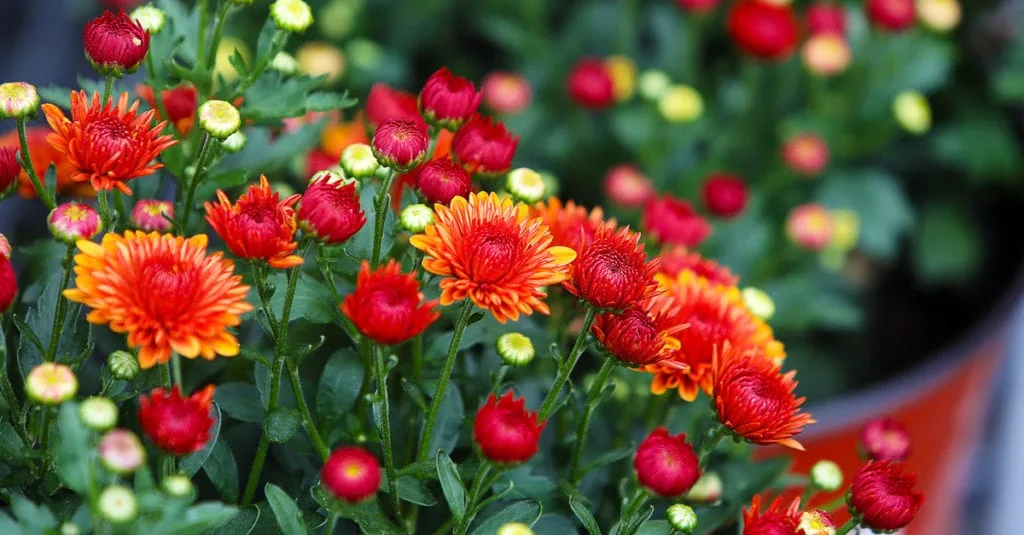
Yakonstant/Shutterstock
While still relatively low maintenance, you need to pay a little bit more attention to mums in your garden. Here’s what to do.
When to Plant Mums
Chances are, mums will be all over your local Home Depot or garden center showing off their fall colors in late summer or early autumn. This is an excellent time to plant your mum as an annual.
If you want your mums to have a better chance of surviving the winter, plant them in the early spring. This way, they will be able to get established in your garden.
With any look, you will see them blooming with new growth in the fall. And you may even see a few buds in the spring before pinching for autumn flowers.
How to Plant Mums in Your Flower Bed
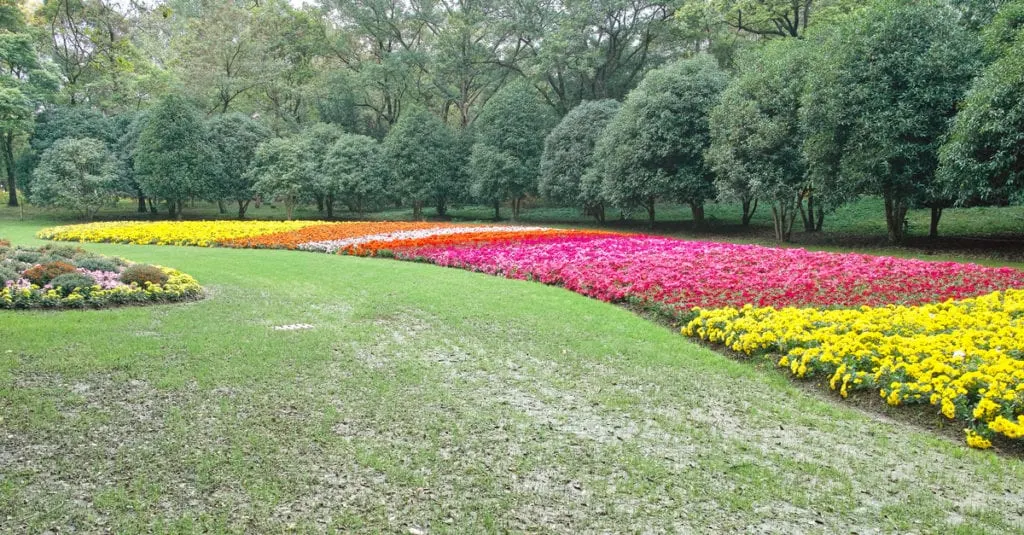
Atiger/Shutterstock
The first thing to keep in mind when selecting a location is that mums need enough sunlight—at least six hours or more. Once you have a sunny location, dig a hole twice as wide as your pot.
Place your plant in the hole even with ground level, then backfill the soil over the top. Water with plant food, and then top with a three-inch layer of mulch. This mulch will help your mums survive the first frost.
Lastly, water daily until the plant is established in your garden. Be sure to keep your soil moist to enjoy mums in full bloom.
Deadheading Mums
Indoor mums should be deadheaded to promote optimal blooms and keep it looking attractive. To deadhead mums, use shears to snip off the heads and any foliage that has begun to wilt.
Outside, you can prune mums before overwintering. However, leave the extra foliage, as these leaves can help your plant survive the first hard frost.
Pinching Mums
If you purchased a full, potted plant at the garden store, it is ready for planting and has already been pinched. However, your spring plants require pinching for optimal blooming.
Pinching is done by removing the growing tip of a stem. Pinch between your thumb and forefinger, then place about half of the new growth at the top of the shoot.
Do this to some stems with buds and some without. Repeat the process after every several inches of growth, or every two weeks or so until mid-summer. This ensures you will have healthy buds come early fall.
How to Care for Mums Year After Year
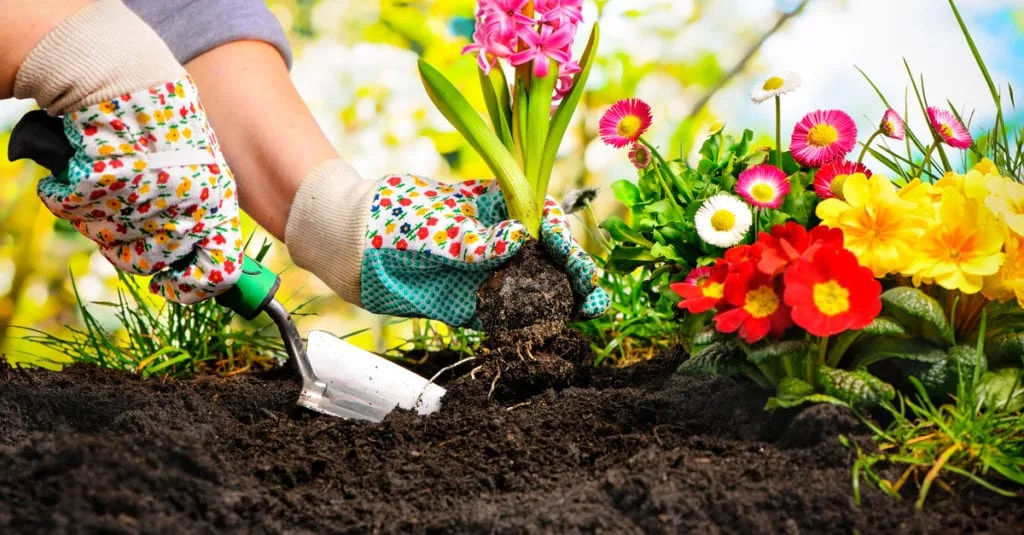
Alexander Raths/Shutterstock
The goal, of course, is to get your perennial mums to come back next year. If you’ve achieved this, it is wise to relocate your mums after three years to minimize pests.
During this time, divide your mums using a knife to cut the outer parts of the plant from the middle. Then, spread out your mums into newly dug holes and top with fertilized soil.
Different Kinds of Mums
You know about florist mums and garden mums, but there are many, many more. Traditional garden mums are the hardiest plants for your garden if you want them to withstand cold weather.
But if you wish to use beautiful mums for indoor decoration, consider a more exotic species. Favorites include pom-pom mums, spoon mums, quilled mums, and anemone.
So, How Do You Take Care of Mums?
It’s no surprise that mums are a garden favorite. These hardy plants can survive a winter frost, and they boast beautiful autumnal hues.
To plant them in your garden, be sure to select garden mums, which are designed for cold weather. Dig a large hole in fertilized soil and top with three inches of mulch.
Keep the soil moist by watering daily. For indoor plants, maintenance is even easier. Place your container in a sunny spot and water it daily to keep the soil moist.
When blooms and foliage start wilting, snip it off to keep your plant looking fresh. You’ll be enjoying those gorgeous autumnal colors through Thanksgiving.

